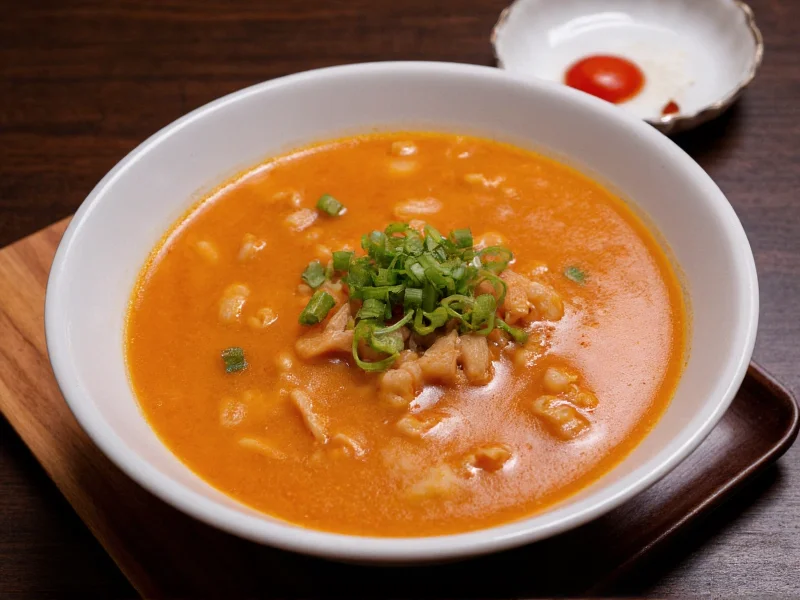For centuries, Chinese hot and sour soup has delighted palates with its perfect harmony of contrasting flavors. This iconic dish represents one of China's most sophisticated culinary achievements in flavor balancing. Unlike the thickened, overly sweet versions found in many Western Chinese restaurants, authentic hot and sour soup maintains a clear broth that allows each ingredient's texture and taste to shine through.
The Authentic Origins of Hot and Sour Soup
Contrary to popular belief, hot and sour soup didn't originate in American Chinese restaurants. Historical records trace this dish back to China's Sichuan province during the Tang Dynasty. The region's humid climate inspired the development of spicy, warming dishes that could cut through dampness and improve circulation. Traditional Chinese medicine principles influenced the soup's creation, as the combination of warming spices and cooling ingredients creates balance in the body.
Sichuan hot and sour soup differs significantly from the Cantonese version, which tends to be milder and sweeter. Northern Chinese variations often incorporate more vinegar for pronounced sourness, while eastern coastal versions might include seafood elements. Each region maintains its own interpretation while preserving the essential hot-sour balance that defines the dish.
Essential Components of Authentic Hot and Sour Soup
The magic of genuine Chinese hot and sour soup lies in its carefully selected ingredients and precise preparation technique. Unlike Westernized versions that rely heavily on cornstarch for thickness, authentic preparation achieves body through proper ingredient ratios and cooking methods.
| Traditional Ingredient | Westernized Version Ingredient | Authentic Purpose |
|---|---|---|
| Chinkiang vinegar | White vinegar | Provides complex sourness with subtle sweetness |
| White pepper | Red pepper flakes | Creates warming heat without overwhelming spice |
| Fresh wood ear mushrooms | Canned mushrooms | Adds distinctive crunchy texture |
| Fresh bamboo shoots | Canned bamboo shoots | Contributes subtle sweetness and texture |
| Silken tofu | Firm tofu | Melts into broth for natural thickening |
Traditional Hot and Sour Soup Recipe
Creating authentic Chinese hot and sour soup requires attention to detail and respect for traditional techniques. This recipe yields four servings and takes approximately 45 minutes from preparation to serving.
Ingredients for Authentic Preparation
- 4 cups chicken or vegetable broth (homemade preferred)
- 2 oz dried wood ear mushrooms, rehydrated
- 2 oz fresh bamboo shoots, julienned
- 3 oz silken tofu, cut into thin strips
- 1 oz dried lily flowers, soaked
- 1 egg, lightly beaten
- 2 tbsp Chinkiang vinegar
- 1 tsp freshly ground white pepper
- 1 tbsp soy sauce
- 1 tsp sesame oil
- Salt to taste
- 1 tbsp cornstarch mixed with 2 tbsp water (used sparingly)
Step-by-Step Preparation
- Prepare all ingredients before beginning cooking (mise en place)
- Bring broth to a gentle simmer in a large pot
- Add wood ear mushrooms, bamboo shoots, and lily flowers; simmer for 15 minutes
- Stir in tofu strips and simmer for another 5 minutes
- Slowly whisk in vinegar, white pepper, soy sauce, and sesame oil
- For proper consistency, add cornstarch slurry only if necessary (authentic versions rarely need thickening)
- Reduce heat to low and slowly drizzle in beaten egg while stirring gently
- Simmer for 2-3 minutes until egg forms delicate strands
- Taste and adjust seasoning as needed
- Serve immediately in pre-warmed bowls
Common Mistakes That Ruin Authentic Flavor
Many home cooks unintentionally compromise the delicate balance of authentic hot and sour soup. Understanding these pitfalls ensures a genuinely traditional result:
- Over-thickening - Authentic versions maintain a light broth consistency, not the gelatinous texture of Americanized versions
- Incorrect vinegar - Chinkiang vinegar's complex flavor cannot be replicated with white vinegar
- Using red pepper instead of white pepper - Creates different heat characteristics that overwhelm other flavors
- Adding ingredients in wrong order - Tofu and egg must be added at precise moments for proper texture
- Overcooking delicate ingredients - Bamboo shoots and wood ear mushrooms lose texture when boiled too long
Nutritional Profile and Health Benefits
Authentic Chinese hot and sour soup offers notable nutritional advantages compared to its Westernized counterparts. A single serving (about 1.5 cups) typically contains:
- Approximately 80-100 calories
- 5-7 grams of protein
- 2-3 grams of dietary fiber
- Rich in B vitamins from mushrooms
- Contains antioxidants from vinegar and spices
The soup's traditional ingredients provide specific health benefits according to Chinese dietary principles. White pepper promotes circulation and warms the body, while vinegar aids digestion and balances pH levels. Wood ear mushrooms contain compounds that support cardiovascular health, and bamboo shoots provide silica for connective tissue health.
Serving Traditions and Modern Adaptations
In China, hot and sour soup traditionally serves as a starter to awaken the palate before the main meal. It's commonly paired with steamed rice and other dishes in a balanced meal. The soup's warming properties make it particularly popular during colder months, though its digestive benefits ensure year-round consumption.
For vegetarians seeking an authentic experience, traditional Buddhist temple cuisine offers a completely plant-based version using mushroom broth and omitting egg. This variation maintains the essential flavor profile while adhering to dietary restrictions. Gluten-free adaptations require only ensuring that soy sauce is replaced with tamari, as all other traditional ingredients are naturally gluten-free.
Perfecting Your Hot and Sour Soup Technique
Mastering authentic Chinese hot and sour soup requires attention to several subtle techniques:
- Vinegar timing - Add vinegar near the end of cooking to preserve its volatile aromatic compounds
- Pepper freshness - Grind white pepper immediately before use for maximum flavor impact
- Broth quality - Homemade broth makes a significant difference in final flavor complexity
- Temperature control - Maintain a gentle simmer, not a rolling boil, to preserve delicate textures
- Ingredient proportions - The 3:2 ratio of sour to hot elements creates perfect balance











 浙公网安备
33010002000092号
浙公网安备
33010002000092号 浙B2-20120091-4
浙B2-20120091-4